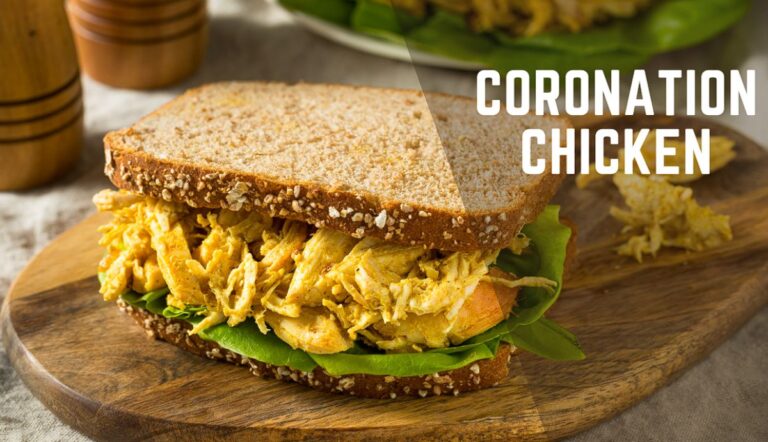Top 12 Best Low Calorie Japanese Snacks
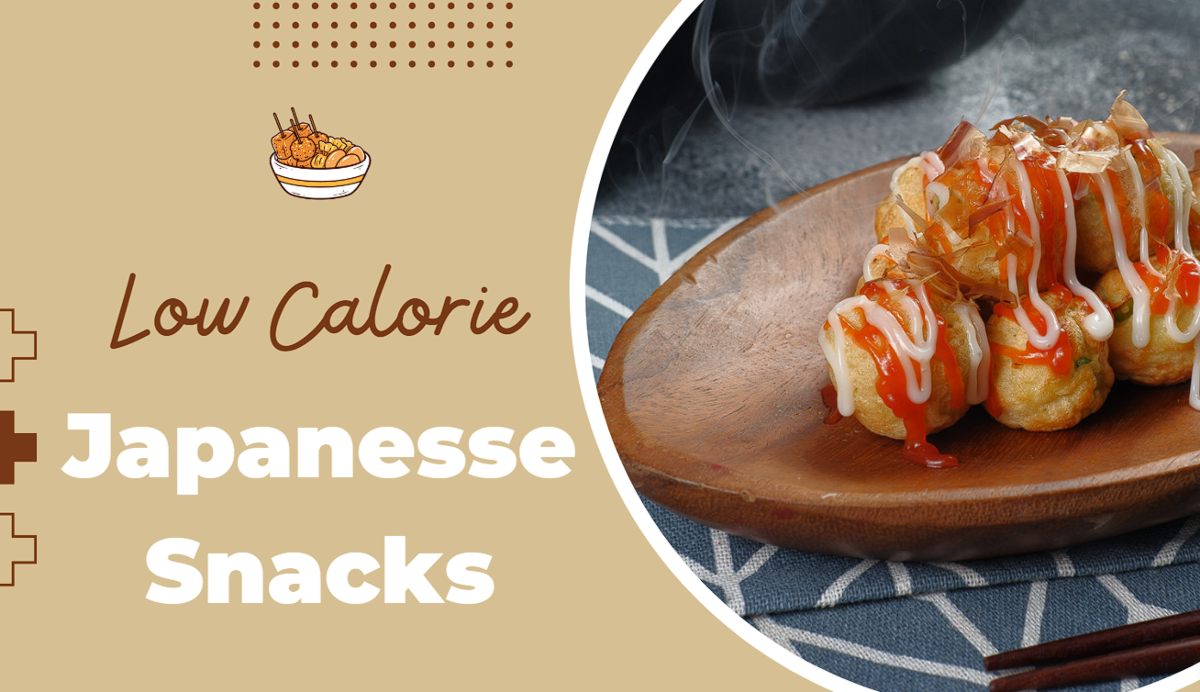
Low Calorie Japanese Snacks: Snacking doesn’t have to be a guilty pleasure. With the rise in popularity of low-calorie options, finding snacks that satisfy your cravings without packing on the pounds has never been easier. Japanese snacks, in particular, offer a delightful mix of unique flavors, interesting textures, and health benefits. Let’s dive into some of the best low-calorie Japanese snacks that you can enjoy guilt-free.
Table of Contents
Why Choose Low Calorie Japanese Snacks?
Unique Flavors and Textures
Japanese snacks are known for their unique flavors and textures that are often hard to find in Western snacks. From the savory crunch of rice crackers to the delicate sweetness of mochi, there’s a Japanese snack to suit every palate. The use of traditional ingredients like soy sauce, miso, and matcha infuses these snacks with flavors that are both exotic and comforting. The textures range from the airy crispiness of rice crackers to the chewy delight of konjac jelly, providing a sensory experience that makes snacking more enjoyable and interesting.
Moreover, the Japanese snack industry continuously innovates, creating new flavors and textures that keep consumers excited. This innovation is driven by a deep cultural appreciation for food, where even simple snacks are crafted with care and attention to detail. This commitment to quality and creativity ensures that Japanese snacks offer a unique eating experience that stands out from typical Western snacks. [Low Calorie Japanese Snacks]
Health Benefits
Many Japanese snacks are made from natural ingredients and are minimally processed, making them a healthier choice compared to many Western snacks. Ingredients such as seaweed, soybeans, and green tea are not only tasty but also packed with nutrients. Seaweed, for instance, is rich in vitamins and minerals, while edamame provides a good source of protein and fiber. These ingredients contribute to the overall health benefits of Japanese snacks, supporting everything from heart health to digestion.
Additionally, the portion sizes of Japanese snacks are often smaller, which naturally helps with portion control and prevents overeating. The emphasis on balance and moderation in Japanese cuisine extends to their snacks, ensuring that you can enjoy a treat without overindulging. This makes Japanese snacks an excellent choice for those looking to maintain a healthy diet while still enjoying flavorful and satisfying foods. [Low Calorie Japanese Snacks]
Cultural Influence on Snacking
In Japan, snacking is an integral part of the culture. Whether it’s enjoying a quick bite on the go or savoring a delicacy with tea, snacks are more than just food; they are an experience. Traditional Japanese snacks often have historical and cultural significance, with many recipes passed down through generations. This cultural richness adds depth to the snacking experience, making it not just about taste but also about connecting with a part of Japanese heritage.
Japanese snacks are often enjoyed during social gatherings, festivals, and tea ceremonies, highlighting their role in bringing people together. The act of sharing snacks and enjoying them in a communal setting enhances their appeal and makes them more enjoyable. This cultural aspect of snacking in Japan underscores the importance of food in social interactions and daily life. [Low Calorie Japanese Snacks]
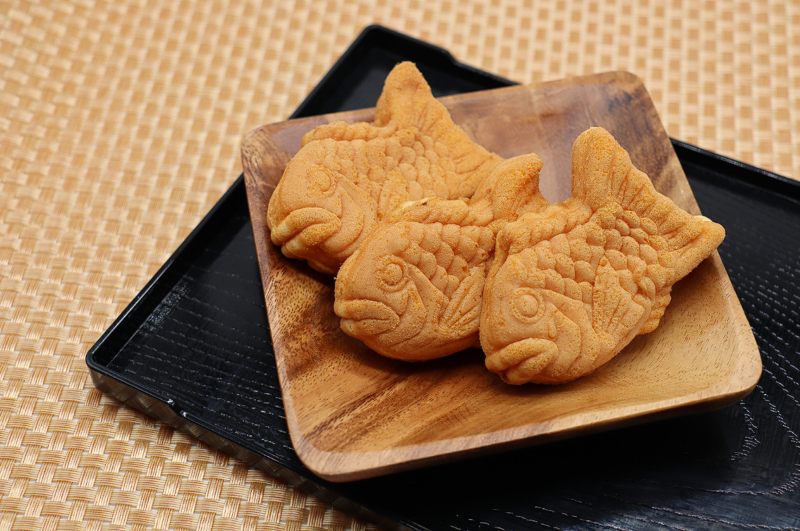
What Makes a Snack Low-Calorie?
Definition and Criteria
A low-calorie snack typically contains 100 calories or less per serving. These snacks are designed to provide a satisfying experience without adding excessive calories to your diet. The focus is on offering nutrient-dense options that deliver essential vitamins, minerals, and other nutrients while keeping the calorie count low. This allows individuals to enjoy a variety of foods without worrying about overconsuming calories.
To qualify as low-calorie, snacks must also be low in added sugars, unhealthy fats, and sodium. This ensures that they not only help in calorie control but also support overall health. For instance, a low-calorie snack should ideally have natural sweetness from ingredients like fruits rather than added sugars. This approach helps in maintaining a healthy diet while enjoying delicious snacks. [Low Calorie Japanese Snacks]
Benefits of Low-Calorie Snacks
Low-calorie snacks can help with weight management, reduce the risk of overeating, and contribute to overall health and wellness. They allow you to enjoy a variety of foods while keeping calorie intake in check. By incorporating low-calorie snacks into your diet, you can satisfy your hunger between meals without consuming excessive calories, which is crucial for maintaining a healthy weight.
Moreover, low-calorie snacks can provide a steady source of energy throughout the day, preventing the energy crashes that often come with high-sugar, high-fat snacks. This sustained energy helps in maintaining focus and productivity, making low-calorie snacks a great option for busy individuals. Additionally, many low-calorie snacks are rich in fiber, which aids digestion and helps you feel full longer, further supporting weight management efforts. [Low Calorie Japanese Snacks]
Top 12 Best Low-Calorie Japanese Snacks
1. Rice Crackers (Senbei)
Rice crackers, or senbei, are a traditional Japanese snack made from rice. They come in various flavors, from salty soy sauce to sweet sugar-coated varieties. Senbei are often enjoyed with tea and are a popular treat during festivals and special occasions. The texture of senbei can range from light and crispy to thick and crunchy, offering a versatile snacking option.
Nutritional Information:
Approximately 70-100 calories per serving (depends on the flavor).
Flavor Varieties:
Soy sauce, sesame, sugar-coated, and more. Each flavor offers a unique taste experience, making it easy to find a senbei variety that suits your preferences. The soy sauce flavor is savory and slightly salty, while the sugar-coated version provides a sweet crunch. Sesame-flavored senbei offer a nutty taste, adding to the diversity of flavors available. [Low Calorie Japanese Snacks]
2. Edamame
Edamame are young soybeans, typically steamed or boiled and lightly salted. They are a great source of protein and fiber, making them a nutritious and satisfying snack. Edamame is often served as an appetizer in Japanese restaurants and can be enjoyed both hot and cold. The natural sweetness of the soybeans, combined with a hint of salt, makes edamame a delightful and refreshing snack.
Nutritional Information:
Around 120 calories per cup.
How to Enjoy:
Best served warm, with a sprinkle of sea salt. You can also add other seasonings like garlic powder, chili flakes, or lemon juice to enhance the flavor. Edamame can be enjoyed on its own or added to salads and other dishes for a protein boost. The process of popping the beans out of their pods makes eating edamame a fun and interactive experience. [Low Calorie Japanese Snacks]
3. Seaweed Snacks
Seaweed snacks are thin sheets of roasted seaweed, lightly salted and sometimes flavored with sesame oil. They are a popular snack in Japan due to their light, crispy texture and umami flavor. Seaweed is also packed with nutrients, including iodine, vitamins, and minerals, making these snacks a healthy choice.
Nutritional Information:
About 25-50 calories per pack.
Flavor Varieties:
Original, sesame, spicy. The original flavor offers a simple, salty taste, while the sesame variety adds a nutty, aromatic element. Spicy seaweed snacks include a kick of heat, perfect for those who enjoy a bit of spice. These snacks are not only delicious but also incredibly convenient, making them a great option for on-the-go snacking. [Low Calorie Japanese Snacks]
4. Konjac Jelly
Konjac jelly is made from the root of the konjac plant and is known for its low calorie and high fiber content. This jelly-like snack is popular in Japan for its ability to satisfy sweet cravings without adding many calories. Konjac jelly is often flavored with fruit extracts, giving it a refreshing taste and appealing texture.
Nutritional Information:
Around 10-20 calories per serving.
Flavor Varieties:
Fruit flavors like apple, grape, and peach. Each flavor offers a burst of fruity sweetness, making konjac jelly a delightful treat. The jelly’s chewy texture adds to the enjoyment, providing a unique snacking experience. This snack is also available in convenient, portable packaging, making it easy to enjoy on the go. [Low Calorie Japanese Snacks]
5. Shirataki Noodles
Shirataki noodles are made from the konjac plant and are extremely low in calories and carbohydrates. These noodles have a gelatinous texture and are often used in soups, stir-fries, and salads. Shirataki noodles are an excellent alternative to traditional pasta, providing a similar experience without the high calorie and carb content.
Nutritional Information:
Approximately 10 calories per serving.
How to Enjoy:
Great in soups, stir-fries, or salads. Shirataki noodles absorb the flavors of the dishes they are cooked with, making them versatile and easy to incorporate into various recipes. For a quick and healthy meal, try stir-frying shirataki noodles with vegetables and a lean protein source, or add them to a miso soup for a comforting and low-calorie dish. [Low Calorie Japanese Snacks]
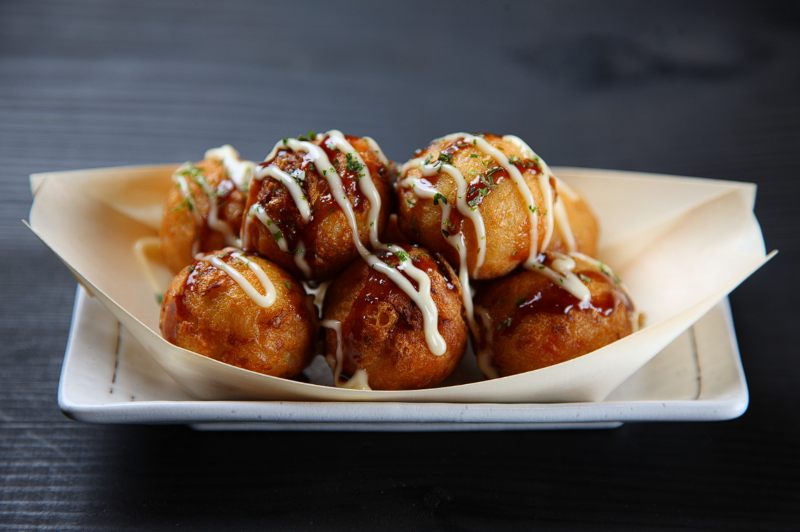
6. Wasabi Peas
Wasabi peas are roasted peas coated with a spicy wasabi seasoning, offering a crunchy and spicy snack option. These snacks are popular for their intense flavor and satisfying crunch. Wasabi peas are a great choice for those who enjoy bold, spicy snacks that also provide a bit of heat.
Nutritional Information:
About 130 calories per serving.
Flavor Varieties:
Traditional wasabi, soy sauce. The traditional wasabi flavor offers a fiery kick, while the soy sauce variety provides a savory, umami-rich taste. Wasabi peas are perfect for adding a bit of excitement to your snack routine, and their crunchy texture makes them a satisfying choice. [Low Calorie Japanese Snacks]
7. Mochi (Low-Calorie Versions)
Mochi is a chewy rice cake, and low-calorie versions are made with fewer sweeteners and healthier ingredients. These versions retain the delightful texture of traditional mochi but with fewer calories, making them a guilt-free treat. Mochi is often filled with various fillings, such as sweet red bean paste or fruit, adding to its appeal.
Nutritional Information:
Around 50-100 calories per piece.
Flavor Varieties:
Matcha, red bean, plain. Matcha-flavored mochi offers a delicate, slightly bitter taste, while red bean-filled mochi provides a sweet and earthy flavor. Plain mochi can be enjoyed on its own or used as a base for other desserts. The versatility and unique texture of mochi make it a beloved snack in Japan and beyond. [Low Calorie Japanese Snacks]
8. Miso Soup
Miso soup is a traditional Japanese soup made from fermented soybean paste, tofu, seaweed, and green onions. It is often served as a starter or a light snack and is known for its umami-rich flavor and health benefits. Miso soup is low in calories but packed with nutrients, making it a nutritious choice for any time of day.
Nutritional Information:
Approximately 35-50 calories per serving.
How to Enjoy:
Best served hot, often as a starter or a light snack. You can customize your miso soup by adding various ingredients such as mushrooms, spinach, or seafood. The comforting warmth and savory taste of miso soup make it a perfect choice for a light and nourishing snack. [Low Calorie Japanese Snacks]
9. Pickled Vegetables (Tsukemono)
Tsukemono are a variety of pickled vegetables that are often served as a side dish or snack. These pickles are made using various vegetables, including cucumbers, radishes, and eggplants, and are typically pickled in a mixture of salt, vinegar, and spices. Tsukemono are known for their tangy, refreshing taste and crunchy texture.
Nutritional Information:
About 10-30 calories per serving.
Flavor Varieties:
Pickled cucumbers, radishes, and more. Each type of tsukemono offers a unique flavor profile, from the mild and refreshing taste of pickled cucumbers to the bold and spicy flavor of pickled radishes. These pickles are not only delicious but also packed with beneficial probiotics, supporting digestive health. [Low Calorie Japanese Snacks]
10. Green Tea (Matcha) Snacks
Green tea or matcha snacks include a variety of treats infused with matcha powder, known for its antioxidant properties. Matcha is made from finely ground green tea leaves and is renowned for its health benefits, including its ability to boost metabolism and provide a calm, focused energy.
Nutritional Information:
Varies, but typically around 50-100 calories per serving.
Flavor Varieties:
Matcha cookies, matcha chocolate, and more. Matcha cookies offer a delicate sweetness with a slightly bitter undertone, while matcha chocolate combines the rich, creamy taste of chocolate with the earthy flavor of matcha. These snacks are a delicious way to enjoy the health benefits of green tea in a convenient and tasty form. [Low Calorie Japanese Snacks]
11. Tofu Chips
Tofu chips are crispy snacks made from thinly sliced tofu, seasoned and baked or fried until crispy. These chips offer a high-protein, low-calorie alternative to traditional potato chips. The light and airy texture, combined with the savory seasoning, makes tofu chips a satisfying snack choice.
Nutritional Information:
Approximately 50-70 calories per serving.
Flavor Varieties:
Salted, spicy, garlic. Each flavor provides a unique taste experience, from the simple, savory taste of salted tofu chips to the bold, spicy flavor of chili-seasoned chips. Garlic-flavored tofu chips add an aromatic twist, making them a delicious and versatile snack. [Low Calorie Japanese Snacks]
12. Daifuku (Low-Calorie Versions)
Daifuku is a type of mochi filled with sweet fillings, and low-calorie versions use healthier ingredients and less sugar. These versions maintain the delightful chewy texture and sweet taste of traditional daifuku while reducing the calorie content. Daifuku is often enjoyed with tea and is a popular treat during special occasions.
Nutritional Information:
Around 70-100 calories per piece.
Flavor Varieties:
Strawberry, red bean, matcha. Strawberry daifuku offers a sweet and fruity flavor, while red bean-filled daifuku provides a rich and earthy taste. Matcha-flavored daifuku combines the delicate bitterness of green tea with the sweetness of the filling, creating a harmonious balance of flavors. [Low Calorie Japanese Snacks]
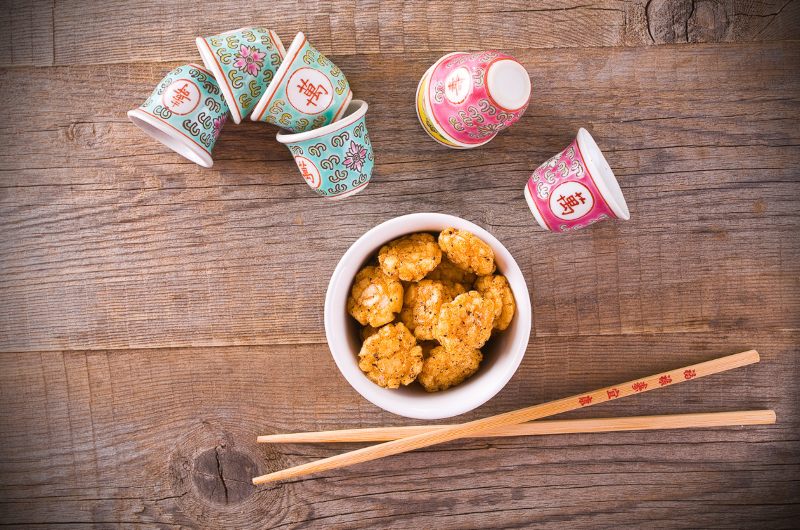
How to Incorporate Low-Calorie Japanese Snacks into Your Diet
Tips and Suggestions
- Portion Control: Even low-calorie snacks can add up if consumed in large quantities. Stick to recommended serving sizes to ensure you don’t overconsume calories. Measuring out your snacks and placing them in individual containers can help with portion control and prevent mindless eating.
- Balance: Pair these snacks with other healthy foods to maintain a balanced diet. For example, enjoy edamame with a piece of fruit for a balanced snack that provides both protein and fiber. Incorporating a variety of snacks ensures you get a range of nutrients and prevents monotony in your diet.
- Timing: Use these snacks to curb hunger between meals or as a light treat after dinner. Eating small, low-calorie snacks throughout the day can help maintain energy levels and prevent overeating during main meals. Consider having a seaweed snack or a piece of low-calorie mochi as a mid-afternoon pick-me-up.
Portion Control
Portion control is essential when incorporating low-calorie snacks into your diet. While these snacks are lower in calories, consuming large quantities can still lead to excessive calorie intake. To maintain portion control, measure out your snacks in advance and store them in individual servings. This practice helps prevent overeating and ensures you stay within your daily calorie limit. [Low Calorie Japanese Snacks]
Balance
Balancing your snacks with other healthy foods is crucial for a well-rounded diet. Pairing low-calorie Japanese snacks with fruits, vegetables, or lean proteins can enhance their nutritional value. For instance, enjoy a serving of edamame with a side of sliced cucumbers for a balanced and refreshing snack. Combining different food groups helps you get a variety of nutrients and keeps your diet interesting.
Timing
Using low-calorie snacks strategically can help manage hunger and maintain energy levels throughout the day. Consuming these snacks between meals can prevent overeating during main meals and keep your metabolism active. Opt for a light snack like miso soup or a few pieces of pickled vegetables in the afternoon to curb hunger and stay energized. [Low Calorie Japanese Snacks]
Where to Buy Low-Calorie Japanese Snacks
Online Retailers
Many online retailers specialize in Japanese snacks and offer a wide variety of options. Sites like Amazon, Japanese grocery stores, and specialty snack shops are great places to start. Shopping online allows you to explore a broader range of products, including unique flavors and limited-edition items that may not be available locally. Additionally, many online stores provide detailed product descriptions and customer reviews, helping you make informed purchasing decisions.
Local Stores
Check your local Asian grocery stores for a selection of Japanese snacks. Some mainstream supermarkets also carry a limited selection in their international food aisle. Visiting local stores allows you to see the products firsthand and often discover new snacks that may not be advertised online. Plus, purchasing locally supports small businesses and reduces shipping times and costs. [Low Calorie Japanese Snacks]
Benefits of Online Shopping
Online shopping for Japanese snacks offers several advantages. Firstly, you can access a wider variety of products, including specialty items and hard-to-find snacks. Many online retailers also offer bulk purchasing options, which can be more cost-effective. Additionally, shopping online provides the convenience of home delivery, saving you time and effort.
Benefits of Local Shopping
Local shopping allows you to immediately access and enjoy your snacks without waiting for delivery. You can also ask store staff for recommendations and discover fresh, locally sourced products. Shopping locally supports your community and can lead to more personalized shopping experiences. [Low Calorie Japanese Snacks]
Conclusion
Low-calorie Japanese snacks offer a delightful and healthy way to enjoy snacking without the guilt. With their unique flavors, textures, and nutritional benefits, these snacks can easily become a favorite part of your diet. From the savory crunch of rice crackers to the refreshing taste of pickled vegetables, there’s a Japanese snack to suit every preference. By incorporating these snacks into your daily routine, you can enjoy delicious treats while maintaining a healthy lifestyle. So, why not give them a try and discover your new favorite snack today?
FAQs
Q1. What are the best places to buy Japanese snacks?
You can buy Japanese snacks from online retailers like Amazon, specialty Japanese grocery stores, and local Asian markets. These sources offer a wide variety of options, including unique flavors and specialty items. Shopping online provides convenience and access to a broader range of products, while local stores offer immediate availability and personalized recommendations.
Q2. Are these snacks appropriate for individuals with dietary restrictions?
Many low-calorie Japanese snacks are suitable for various dietary restrictions, but it’s always best to check the ingredients list. For instance, edamame is a great option for vegetarians and vegans, while seaweed snacks are often gluten-free. However, some snacks may contain allergens like soy or nuts, so it’s important to read labels carefully.
Q3. Can children enjoy these snacks?
Yes, many of these snacks are suitable for children, but always check for any potential allergens. Snacks like rice crackers and edamame are not only tasty but also nutritious, making them a great choice for kids. Be sure to choose age-appropriate snacks and supervise younger children to prevent choking hazards.
Q4. How do I store these snacks to maintain freshness?
Store them in a cool, dry place, and reseal any opened packages to maintain freshness. For snacks that require refrigeration, like pickled vegetables or certain types of mochi, keep them in the fridge and consume them within the recommended time frame. Proper storage helps preserve the flavor and texture of the snacks.




